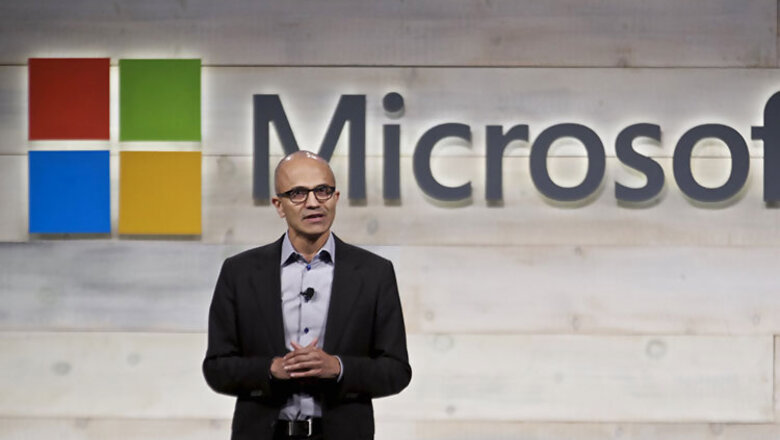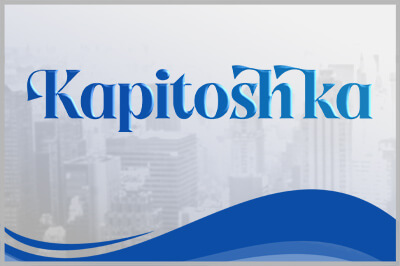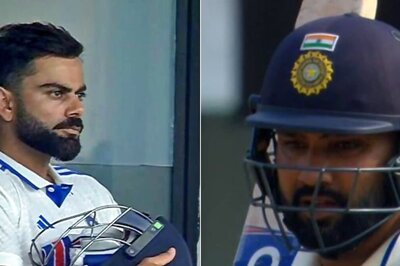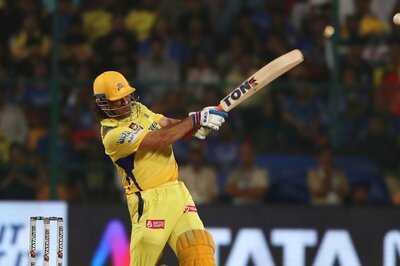
views
Since he took over at the head of Microsoft in 2014, replacing Steve Ballmer, Satya Nadella has shown himself to be a man of change, encouraging creativity and reactivity in all Microsoft's businesses.
Under his leadership, the company has begun innovating again, seeking out new challenges, including offering a multi-platform operating system, getting involved in virtual reality, and manufacturing its very first in-house laptop.
 The Microsoft CEOs: Satya Nadella, Bill Gates and Steve Ballmer (Photo: Microsoft)
The Microsoft CEOs: Satya Nadella, Bill Gates and Steve Ballmer (Photo: Microsoft)
India-born Satya Nadella, 48, joined Microsoft in 1992. Before being appointed CEO, he was head of servers and cloud computing businesses aimed at companies.
Although he had years of experience at Microsoft and a good knowledge of most of its services, he had to deal with a vast job-cutting plan when he was appointed. While 2014 was a year of restructuring, 2015 has proven to be a year of innovation.
 Satya Nadella at a Microsoft shareholder meeting. (Photo: Getty Images)
Satya Nadella at a Microsoft shareholder meeting. (Photo: Getty Images)
Windows 10 is at the centre of Microsoft's strategy
Under the leadership of Satya Nadella, Microsoft made the news throughout the year. It started with all the announcements relating to Windows 10 through its launch on July 29. The operating system has undergone major changes and is now a multi-platform service, running on PCs, Xboxes, smartphones, tablets and even connected objects.
It includes a voice-activated assistant (Cortana), a new web browser (Edge) and for the first time, it offers facial recognition and a digital fingerprint sensor to enhance security. Microsoft continues to focus on the cloud, which is at the heart of the new Office 2016.
 Satya Nadella walks in front of the Cortana logo. (Photo: Getty Images)
Satya Nadella walks in front of the Cortana logo. (Photo: Getty Images)
Windows 10 is brought to the fore by new devices such as the Microsoft Lumia 950 and 950 XL smartphones, the new generation of the Surface Pro 4 tablet, and the brand's very first laptop, the Surface Book, which is currently available in the US and will be launched in France at the beginning of 2016.
Microsoft also held several demonstrations of HoloLens, its spectacular augmented reality headset, in the home setting and for games. It will be offered to software developers in the first half of 2016 at a cost of $3,000 per unit so that games and applications can be created for this new technology, although no promises have been made about manufacturing it for the general public.
A slow start
The fact remains that success has not come quickly, since three months after its launch Windows 10 is only installed in 9% of the computers connected to the internet worldwide, according to StatCounter data to the end of October 2015, despite the fact that its update is free (for one year) for all users of Windows 7 and 8.1.
 Satya Nadella addresses delegates during the launch of the Windows 10 operating system in Kenya's capital Nairobi, July 29, 2015. (Photo: Reuters)
Satya Nadella addresses delegates during the launch of the Windows 10 operating system in Kenya's capital Nairobi, July 29, 2015. (Photo: Reuters)
On the mobile front, the situation does not seem to have improved as handsets installed with the Microsoft mobile operating system accounted for only 1.7% of smartphones sales worldwide in the third quarter 2015, according to Gartner data.
It will be up to Satya Nadella to ensure that all these promising new developments reach the general public.



















Comments
0 comment